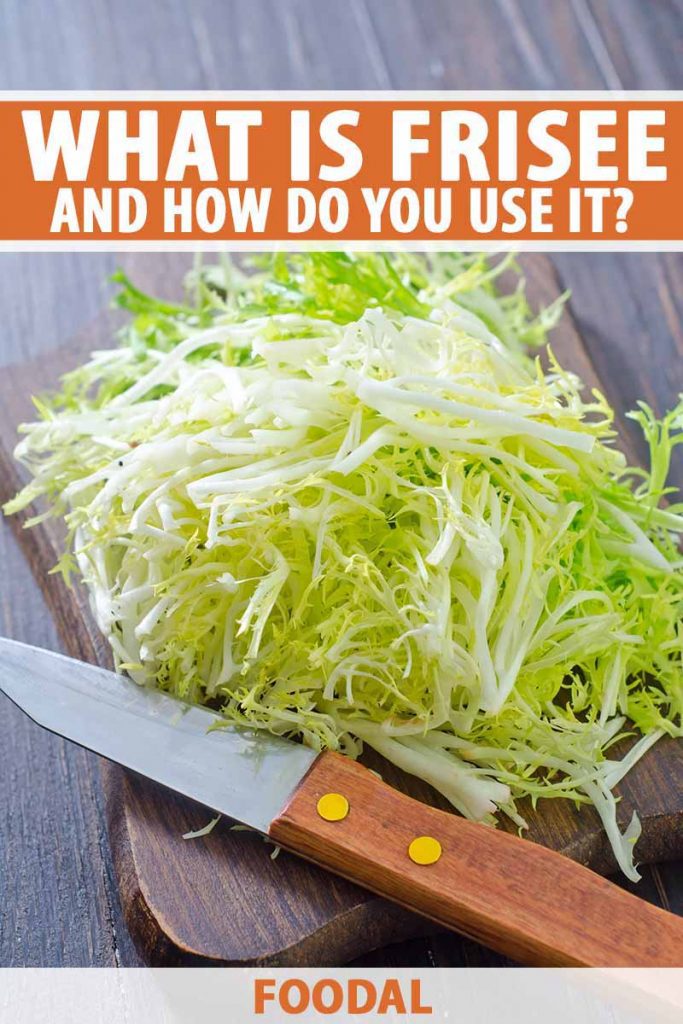The first time I heard the word “frisée,” I thought it was a technique for whipping cream, and in my defense, there is a vodka called FRÏS Whipped Freeze… however, don’t get your tumblers out, because frisée is neither cream, nor a libation – it’s a leafy green!
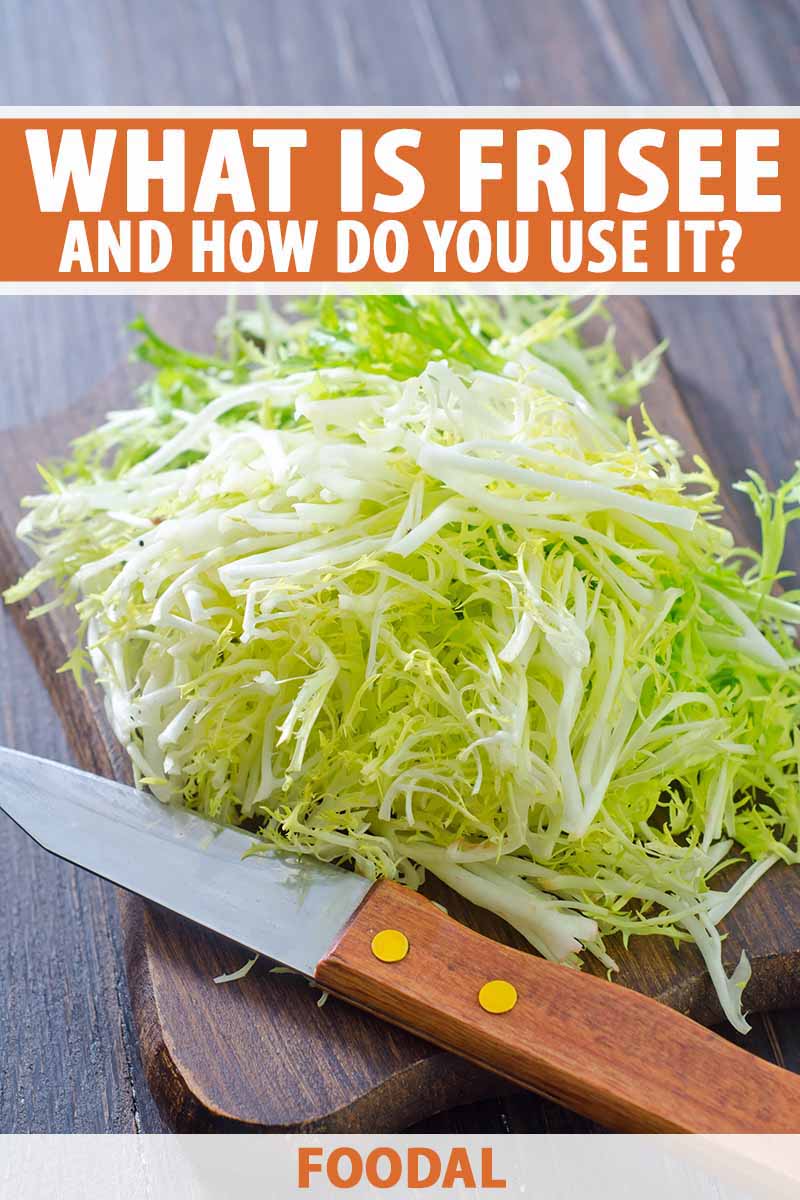
Also known as curly endive, frisée is a member of the chicory family. It’s closely related to Belgian endive, as well as broad-leaf endive, commonly called escarole.
In France, it’s known as chicorée frisée, or curly chicory, and in England, it’s simply endive.
A cool-weather crop, the curly type of endive is available in autumn and winter, and boasts a mildly bitter flavor generally described as “peppery.”
Likely originating in ancient Egypt, frisée has been cultivated in Europe since the 1700s. Today, it’s frequently found in gourmet salad mixes that include other zesty greens like arugula, chervil, and radicchio, as well as baby lettuce.
Here’s everything we’ll cover up ahead:
What You’ll Learn
Piquant and Pricey Greens
Frisée adds zing and crunch to salads, and makes a delectably savory side when slightly wilted in warm oil or dressing.

It is an essential ingredient in a classic salade Lyonnaise, in which it wilts slightly beneath a warm dressing, like bacon honey mustard or another type of vinaigrette, with crispy bacon or ham bits (or the fattier, French-style lardon cubes), a soft poached egg, and toast points or croutons.

The most flavorful, texturally pleasing part of this veggie is the base, or heart of the loose head, where the frilly, finely serrated leaves have been blanched to white shading to pale yellow-green.
Blanching is what makes this leafy green so special. It’s also a labor-intensive process, and what makes frisée rather expensive and often more difficult to find. You may have to shop upscale or at your local farmers market to locate it by the head, but you may find it in a packaged mix at the grocery store.
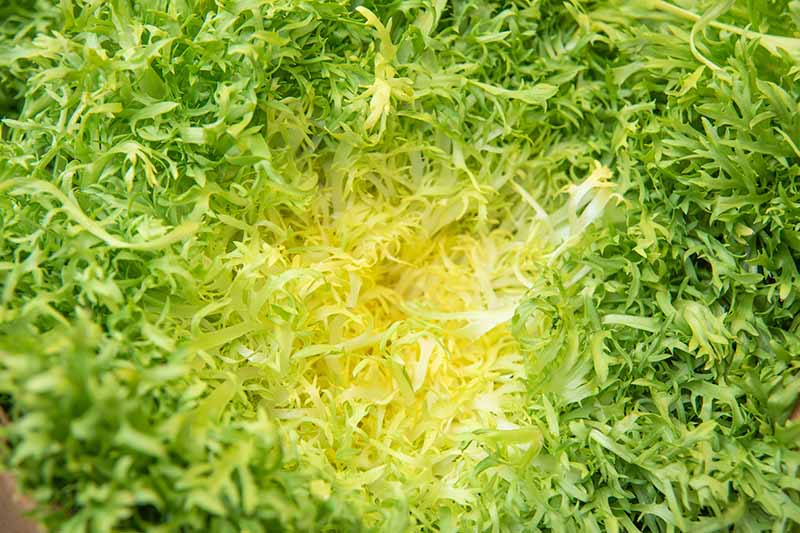
To blanch, a grower places a cover over the center of a developing head to protect it from heat and sun. The result is a crisp heart with soft hues and a pungent flavor.
The outer leaves are either dark green or red, with a bitter taste and tough texture. These are unsuited to use in either cool or warm dishes, and they are generally discarded.
Pro Prep Tips
Try to use a fresh head soon after purchase.
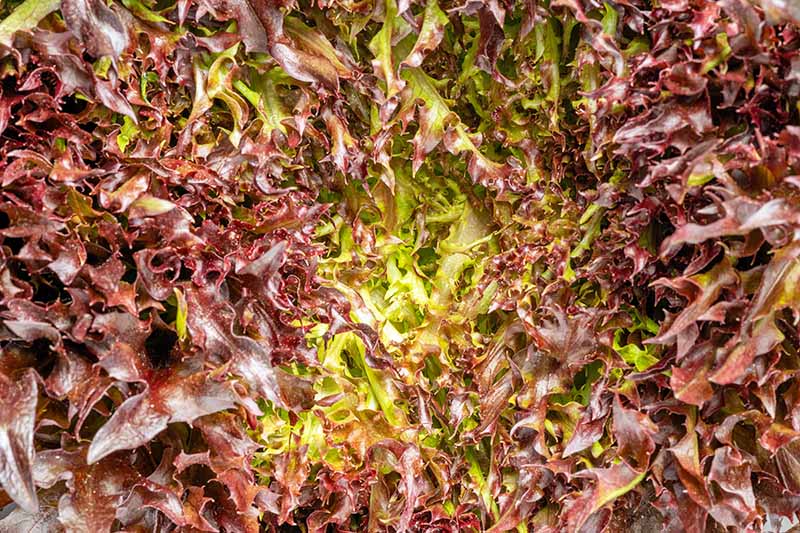
If you must store it, wrap an entire unwashed head loosely in a damp paper towel and place it inside an open plastic bag.
Air circulation and minimal moisture will help to keep it fresh in the crisper drawer of the fridge for up to five days. Bagged mixed greens should last about as long.
When you’re ready to use it, rinse the head with a light mist and gently shake off as much water as you can.
Tear the head into sections, rather than separating individual leaves, to avoid bruising, rusting, and wilting.
When serving, know your audience. Folks who prefer a sweet salad with classics like butter lettuce and romaine may be pleasantly surprised by a few peppery morsels, but don’t go overboard.
On the other hand, people who dive into the anchovies and garlic cloves in an antipasto or Caesar may prefer a generous helping of frisée in a power salad composed entirely of bitter or spicy leafy vegetables, including dandelion greens, kale, and radicchio.
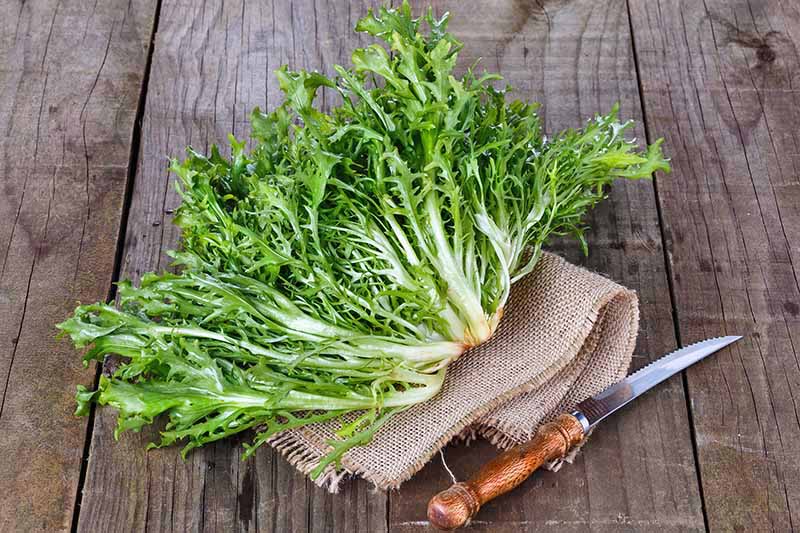
Add room temperature or chilled dressings at the last minute to avoid wilting.
Similarly, when placing a warm food atop a bed of frisée, or lightly wilting it in warm oil or dressing, prep and serve quickly to avoid cooking the greens and rendering them a soggy mess.
An Appealing Accent
Used judiciously, frisée can take a tried-and-true dish to new heights with a zesty flavor that excites the palate and stimulates the appetite.
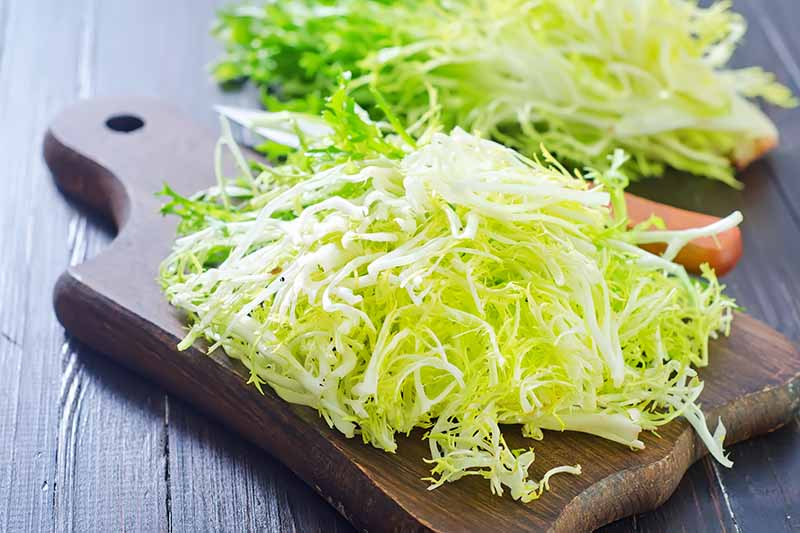
And best of all, it’s a low-calorie food with beneficial dietary fiber.
Pair this curly variety of endive with smoked salmon for a casual but stylish Sunday brunch.
Place it beneath a refreshing mixed vegetable salad with beets.
And for when the whole gang comes home hungry, toast some Kaiser rolls, load them with classic American pulled pork, and top them off with generous peppery mounds of your new favorite leafy green.
If you’ve enjoyed reading about frisée, we recommend the following veggie-forward articles next:
- Leafy Sprouts Salad with Sorghum Chili Vinaigrette
- Sauteed Garlic Beet Greens
- Savory Spinach Pie: Load Up on Delicious Leafy Greens
© Ask the Experts, LLC. ALL RIGHTS RESERVED. See our TOS for more details. Uncredited photos: Shutterstock.
About Nan Schiller
Nan Schiller is a writer from southeastern Pennsylvania. When she’s not in the garden, she’s in the kitchen preparing imaginative gluten- and dairy-free meals. With a background in business, writing, editing, and photography, Nan writes humorous and informative articles on gardening, food, parenting, and real estate topics. Having celiac disease has only served to inspire her to continue to explore creative ways to provide her family with nutritious locally-sourced food.

